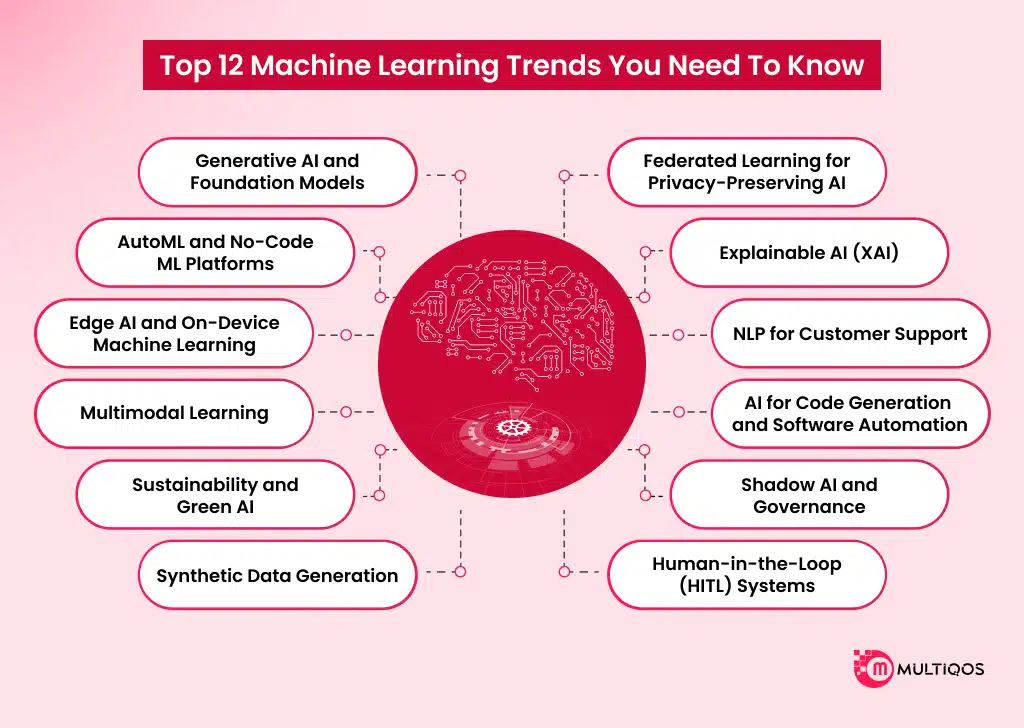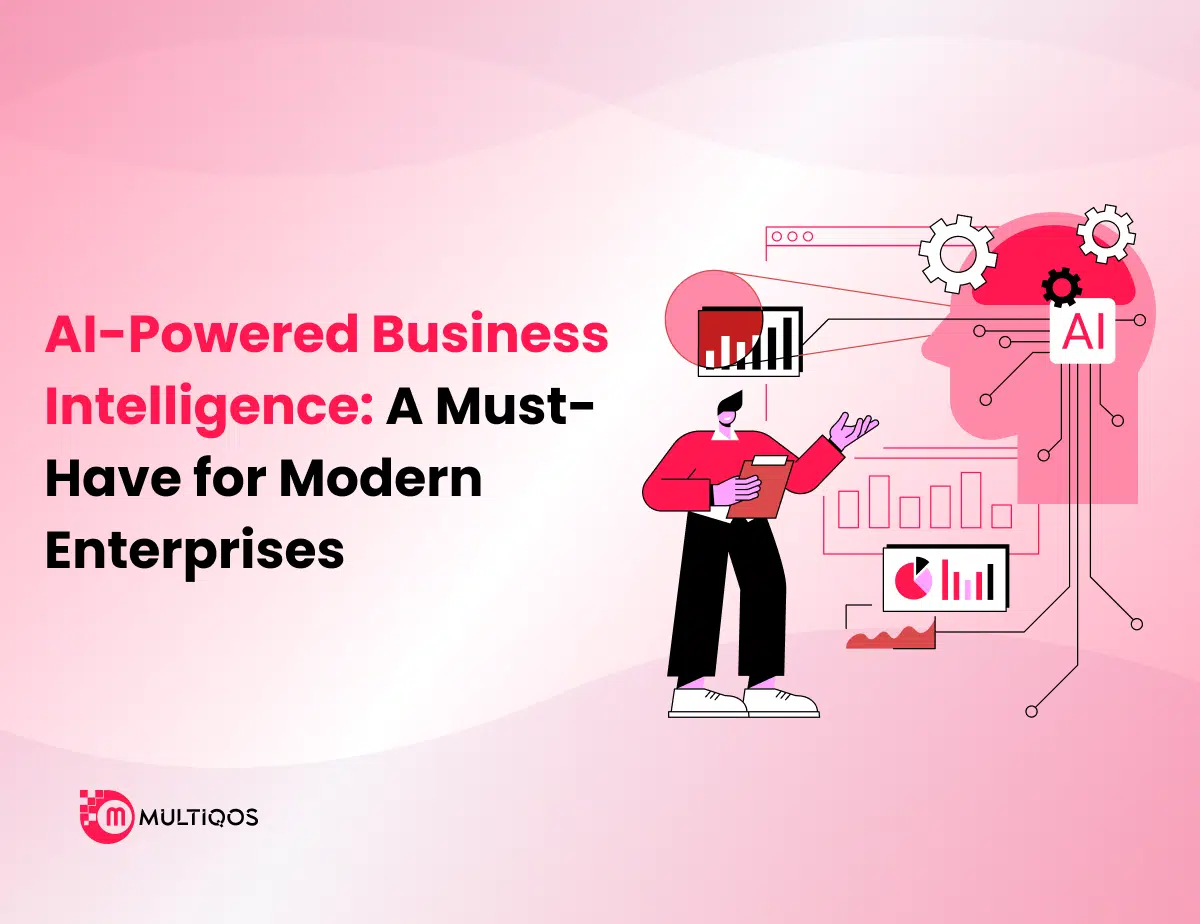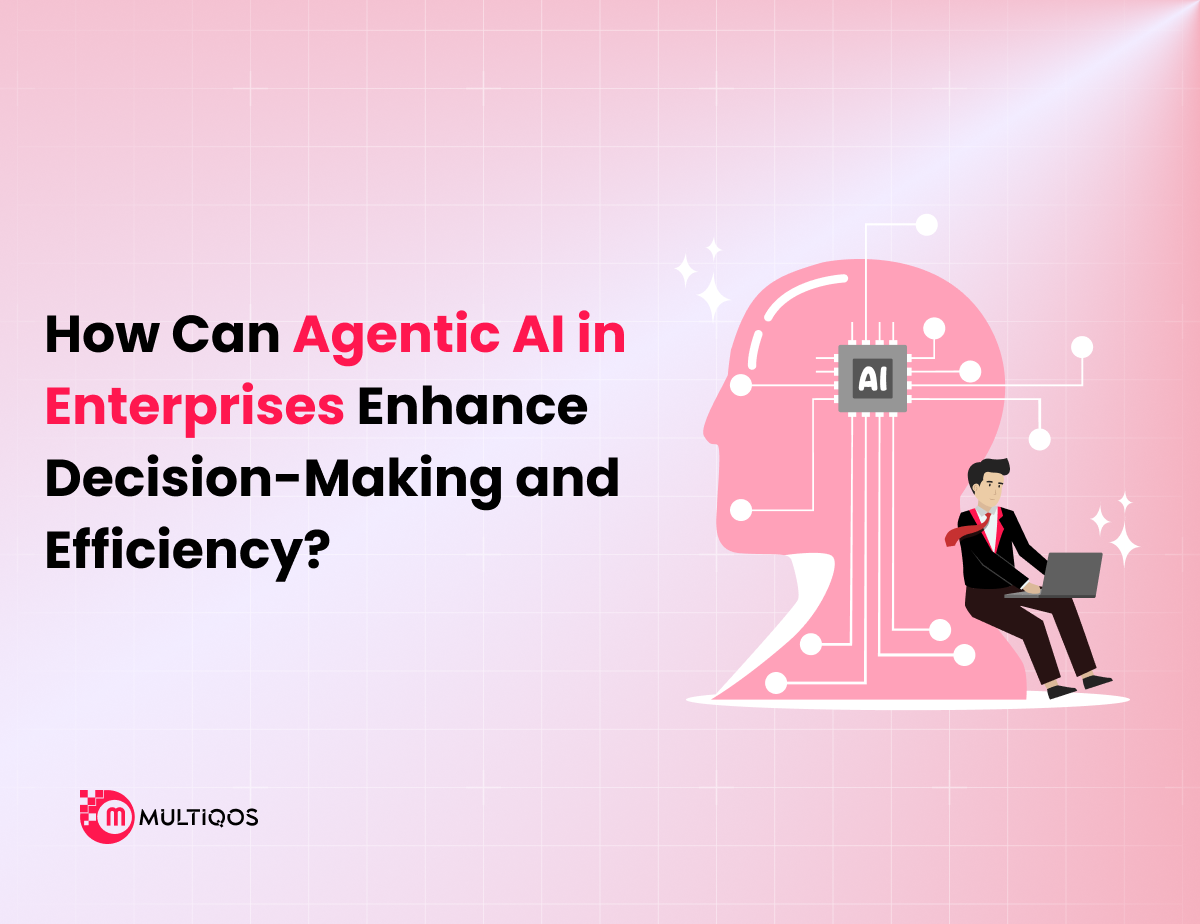Top Machine Learning Trends That Will Define the Next Decade

Table of Contents
Summary:
In this blog, we explore the top machine learning trends that are poised to define the next decade of innovation and transformation. From the rise of autonomous AI agents and real-time edge computing to the growing emphasis on ethical AI and federated learning, these trends are set to revolutionize industries across the board.
We also highlight how advancements in explainable AI, self-supervised learning, and multi-modal models are pushing the boundaries of what’s possible. Whether you’re a developer, business leader, or tech enthusiast, this guide offers valuable insights into the future of machine learning and what it means for the next era of intelligent systems.
Introduction
The vast transformation of machine learning from a narrow focus of study into one of the defining aspects of technology today is astonishing. The increase in adoption of intelligent systems across the world has led to a remarkable growth rate in this sphere. Organizations and users are increasingly applying machine learning to automation, predictive analytics, personalized user interactions, and many others, which is fundamentally transforming the world and daily life as we know it.
Machine Learning trends that we believe, alongside guidance on how organizations can remain competitive in developing the technology, continue to shape the next decade, are discussed in the subsequent sections. These guidelines are designed to help businesses refine their machine learning development and implement an AI strategy.
Top 12 Machine Learning Trends You Need To Know
1. Generative AI and Foundation Models
In the past few years, the spotlight has been on Generative AI, especially with the introduction of GPT, DALL·E, and Claude, which demonstrated how large-scale neural networks are capable of producing text, images, and even code. These generative AI models, or “foundation models”, are rapidly evolving to become more multimodal, customizable, and domain-specific.
As one of the most impactful machine learning trends, Generative AI is likely to drive innovation in the automation of content creation, research, design, and many other processes across almost every industry.
2. Federated Learning for Privacy-Preserving AI
As the privacy of data becomes more sensitive around the world, federated learning has a new approach to training models. It enables learning from a dataset stored in different devices or servers without ever transferring the data. This is gradually becoming common practice in several industries like finance and healthcare that value data privacy.
Security and compliance, along with performance optimization, are provided by federated learning, which is a new machine learning trend.
3. AutoML and No-Code ML Platforms
Non-technical users are being aided by AutoML and no-code platforms, which significantly reduce the barrier of entry. Machine learning models can be built, trained, and deployed using these tools, even in the absence of advanced programming skills.
As one of the most democratizing trends in machine learning, AutoML aids in the adoption of AI for smaller businesses and startups that do not have large data science teams.
4. Explainable AI (XAI)
The incorporation of ML systems into vital areas such as healthcare, finance, and law means the importance of model accuracy is rivaled only by the need to understand the cause behind a decision made by the model. Understanding a model’s inner workings is equally important to accuracy.
Explainable AI serves to increase human comprehension of black-box models by rendering them more intelligible. As with all emerging trends, this is vital to foster trust, comply with standards, and promote the ethical use of AI, paramount issues in the subsequent development of machine learning.
5. Edge AI and On-Device Machine Learning
AI on the edge allows for the execution of machine learning models on smartphones, cameras, and IoT sensors, doing away with cloud processing. This saves bandwidth and reduces latency, which assists in optimizing privacy.
With the rapid increase in the number of smart devices, edge computing is critical for real-time scenarios such as autonomous vehicles, industrial automation, and AR/VR. Edge AI stands out as a top machine learning trend, bridging privacy with performance.
6. NLP for Customer Support
Through AI system voice recognition technology enabled by NLP, it is now easier to automate customer support services. At chatbot dialogue interaction interfaces powered by NLP, businesses can analyze customer queries, provide 24/7 assistance, and perform sentiment analytics to improve services.
With NLP supporting customer interfacing, response times as well as operational costs are dramatically reduced while customer service experience is notably enhanced in terms of speed, accuracy, context sensitivity, and enjoyment. Automated query handling powered by AI allows companies to personalize and efficiently tailor support to further scale their operations, making NLP an indispensable modern tool.
7. Multimodal Learning
With multimodal learning, models are trained to enable the simultaneous processing of multiple data types like text, images, audio, and video. Such an approach strengthens the model’s contextual understanding, improving insight accuracy and richness.
It drives sophisticated innovations in healthcare imaging, virtual assistants, and robotics. As ML progresses, it is clear that multimodal learning will play a significant role in emerging machine learning trends.
8. AI for Code Generation and Software Automation
ML models have reached the sophistication needed to generate quality code, assist developers, and even perform debugging tasks. GitHub Copilot, Amazon CodeWhisperer, and Tabnine are some of the tools where AI is assisting in the software development life cycle.
This is reducing the software development effort, decreasing the error rate, and automating the iterative processes. As part of the ongoing ML trends, AI-assisted coding will certainly be a permanent fixture.
9. Sustainability and Green AI
The energy needed to train large models has risen with the sophistication of technology. Because of this, training AI models demands green initiatives to shift towards model pruning, optimization of algorithms to improve energy efficiency during model execution, and context-sensitive scheduling.
Striking a balance between advancing ML and protecting the environment is critical now more than ever. This trend in machine learning, focused on model efficiency and energy consumption, will become one of the most responsible evolutions in the coming decade.
10. Shadow AI and Governance
The growing concern of Shadow AI—a phenomenon where machine learning models and tools are utilized beyond the sight or governance of IT and compliance units—emerges with the wider organizational adoption of AI technologies. Shadow AI, usually created by individual divisions or through external solutions, presents problems concerning data privacy, accuracy of the model, and even compliance with regulations.
Companies now race to put in place AI governance frameworks meant to restrain, supervise, and manage ML operations throughout the entire enterprise due to the evolving trends in machine learning. Advanced governance is tailored to ensure AI works within the boundaries of effectiveness, ethics, security, and corporate standards.
11. Synthetic Data Generation
When real information is hard to come by, costly, or confidential, synthetic data, which is an imitation of real-world information, is generated to train Machine Learning(ML) models. It is helpful in sectors such as autonomous vehicles, healthcare, and robotics because acquiring large sets of labeled datasets is a cumbersome task.
Along with other ML trends, synthetic data helps reduce a myriad of legal and ethical complications while enabling innovation.
12. Human-in-the-Loop (HITL) Systems
By incorporating human knowledge into the training of machine learning algorithms, HITL systems improve models’ precision and dependability. Providing opportunities for human input during the training or decision-making phases mitigates biases, rectifies mistakes, and facilitates better adaptability—thereby enhancing system performance.
Such hybrid models are particularly valuable in customer support, content moderation, and legal technology. With the increasing need for AI accountability, HITL is developing as an important feature in the practical machine learning trends.
Final Thoughts
Beyond any doubt, going forward, technological advancement and innovation will be fueled heavily by machine learning moving forward. For companies seeking to embrace AI-driven growth, sustaining a competitive edge will largely hinge on their ability to monitor emerging trends in machine learning. The proper skills lead to smarter product development, improved efficiency, and enhanced opportunities hidden within data.
After reading this blog, if you’re planning to transform these trends into meaningful outcomes, then it’s time to hire ML developers and mitigate technological risk within your business.
FAQs
The top machine learning trends are the emergence of generative AI, weaponized privacy through federated learning, model deployment speed through AutoML, and broader acceptance of edge AI. All these advancements seek to enhance accessibility, efficiency, and security in capturing machine learning technologies. Embracing these developments will strategically put companies at an advantage in deriving insights from data.
Further advancements in machine learning will integrate predictive analytics, intelligent automation, and tailored services into retail, manufacturing, finance, and healthcare sectors. Everything from disease diagnostics to supply chain management and even fraud detection will become finely tuned to specific industries, making machine learning applications more sophisticated. This will improve efficiency and decision-making throughout various industries.
Adapting the latest developments alleviates these constraints so that organizations are able to improve services, lower operational costs, and protect their organizations from market uncertainty.
ML specialists must understand deep learning, model interpretability, data privacy methods, and cloud-based ML deployment. Knowledge of TensorFlow, PyTorch, and new tools such as AutoML will be of great importance. A strong grasp of the underlying statistics, data engineering, and relevant industry facets will increase their worth in a fast-changing environment.
An organization can think of employing ML developers when it wants to execute strategies based on data, automate tasks, or create sophisticated applications. If you are looking into machine learning solutions and do not have the required skills in-house, then bringing in talented developers can fast-track your journey. Their guidance will enable system modernization that is trend-compliant, scalable, and delivers results that matter.
Get In Touch







